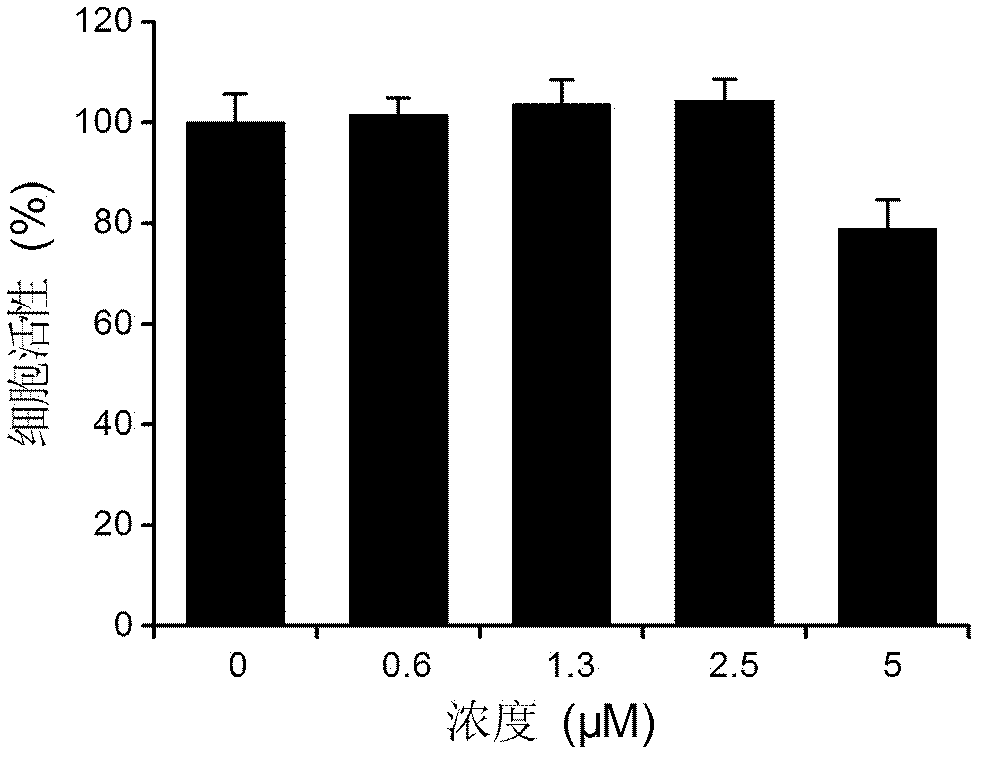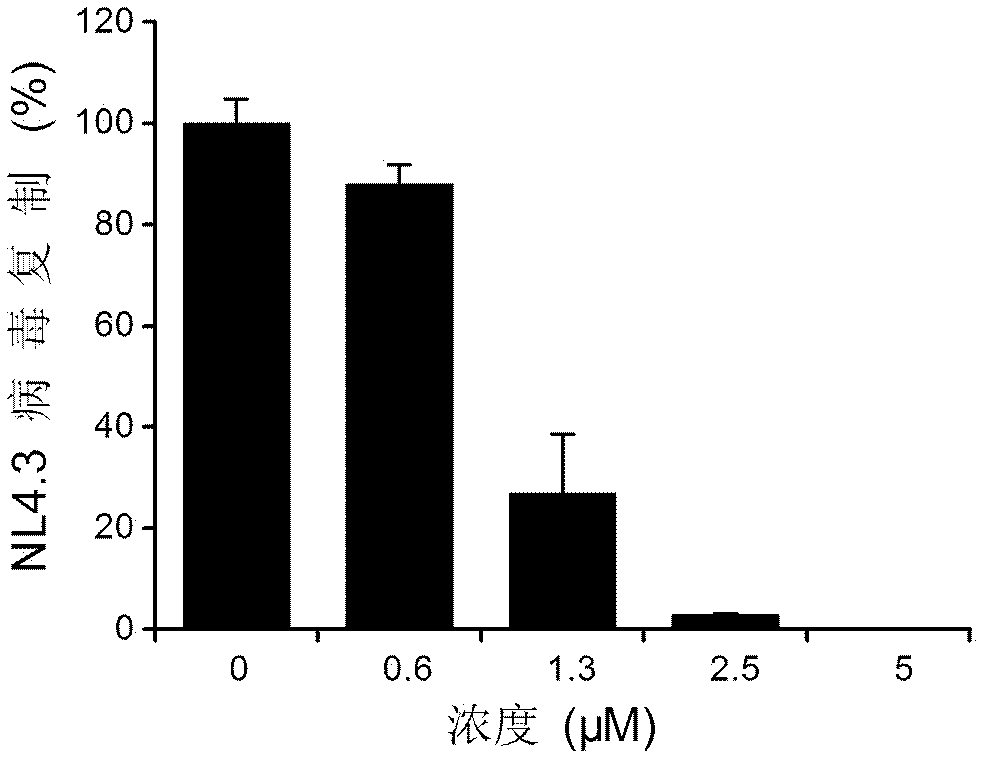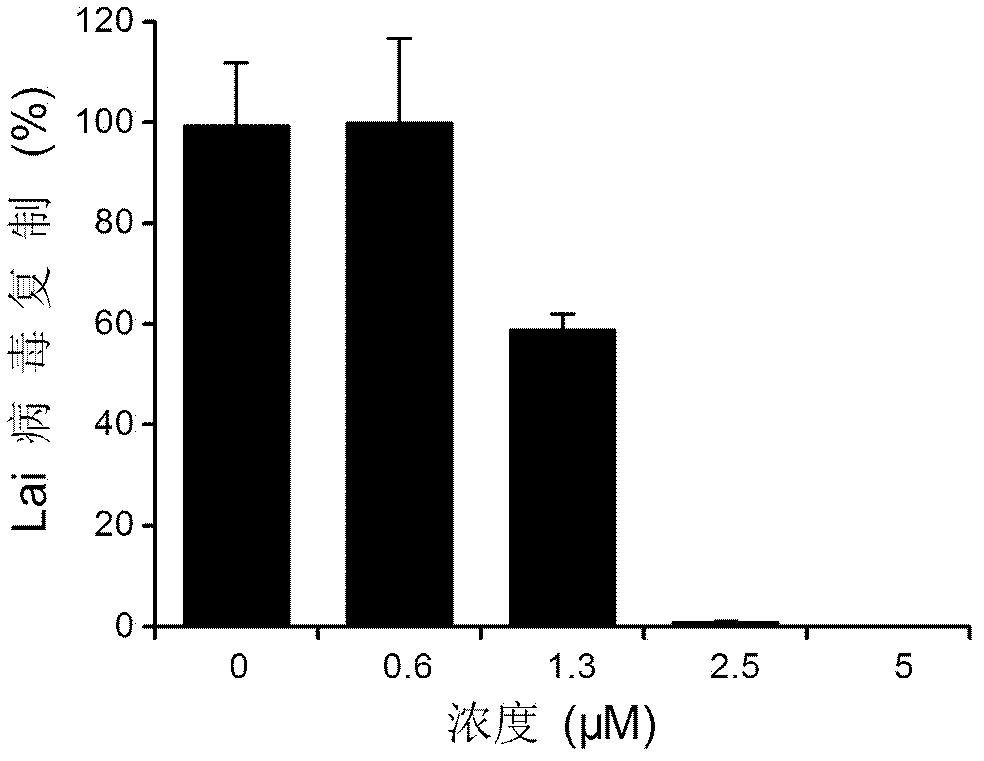Application of fangchinoline for preparing medicine for treating or preventing HIV
A technology for fangchinoline and HIV, applied in the field of medicine, can solve the problems of virus variability and drug resistance, large toxic and side effects, high price, etc., and achieve the effects of wide sources and novel targets.
- Summary
- Abstract
- Description
- Claims
- Application Information
AI Technical Summary
Problems solved by technology
Method used
Image
Examples
Embodiment 1
[0027] Example 1: Cytotoxicity and anti-HIV activity of fangchinoline in MT-4 cells
[0028] In this example, Cell TiterGlo (promega product) reagent was used to quantitatively detect cell activity to determine the cytotoxicity of fangchinoline, and p24 ELISA (the p24ELISA kit was purchased from Wuhan Institute of Virology, Chinese Academy of Sciences) was used to detect the cytotoxicity of fangchinoline. The virus content in the supernatant of infected cells was used to determine the antiviral activity of the drug. The specific experimental method is as follows.
[0029] Cytotoxicity test: MT-4 cells (from the National Institute of Allergy and Infectious Diseases) were stored at 37°C, 5% CO 2 cultured in a humidified incubator. Cultured in 1640 culture medium containing 10% FBS, 100 U / mL penicillin and streptomycin, and timed subculture to ensure that the cell density was 1×10 5 ~1×10 6 / mL. In the drug toxicity detection experiment, 2-fold serially diluted fangchinoline...
Embodiment 2
[0034] Example 2: Effect of fangchinoline on the early stages of the HIV-1 replication cycle
[0035] In order to study the antiviral mechanism of fangchinoline, this embodiment uses the MT-4 cell protection experiment and the TZM-b1 reporter cell experiment to detect the antiviral activity of the drug simultaneously. Institute) to determine whether fangchinoline acts on the early stages of the HIV-1 replication cycle. In the MT-4 protection assay, HIV-1 undergoes multiple rounds of replication and causes cytopathic effects, and all anti-HIV-1 drugs can show activity in this assay. TZM-b1 cells (from the National Institute of Allergy and Infectious Diseases) stably express the HIV receptor CD4, the co-receptors CXCR4 and CCR5, and the reporter gene (firefly luciferin) controlled by the HIV-1 promoter LTR is integrated in the genome Enzyme), the expression of Tat after virus infection can promote the expression of reporter gene, so, in this system, only antiviral drugs that ac...
Embodiment 3
[0042] Example 3: Effect of Fangchinoline on the Production of Infectious Virus Particles
[0043] In this experimental system, the HIV genome is directly transfected into cells so that the HIV life cycle consists only of gene expression, viral particle packaging, secretion and maturation. This experiment can be used to verify whether the drug acts on late events in the HIV life cycle. Take 293T cells in the logarithmic growth phase (purchased from the American Type Culture Collection), and use 5×10 cells per well. 4 / wells were laid on a 24-well plate for later use. The next day, the plasmid pNL4.3 was transfected by liposome method (Lipofactamine 2000, Invitrogen Company), and the fresh culture medium containing the drug was replaced after 3 hours. After 48 hours of transfection, Cell TiterGlo was used to detect cell viability; p24ELISA was used to detect the production of virus particles; TZM-b1 reporter cells were used to detect progeny virus infectivity. The p24 antige...
PUM
 Login to View More
Login to View More Abstract
Description
Claims
Application Information
 Login to View More
Login to View More - R&D Engineer
- R&D Manager
- IP Professional
- Industry Leading Data Capabilities
- Powerful AI technology
- Patent DNA Extraction
Browse by: Latest US Patents, China's latest patents, Technical Efficacy Thesaurus, Application Domain, Technology Topic, Popular Technical Reports.
© 2024 PatSnap. All rights reserved.Legal|Privacy policy|Modern Slavery Act Transparency Statement|Sitemap|About US| Contact US: help@patsnap.com










